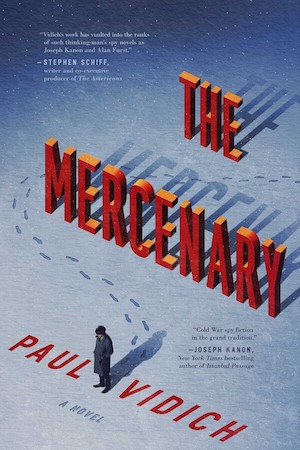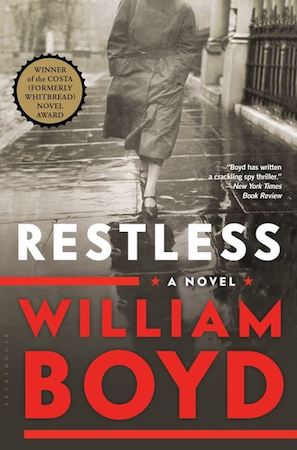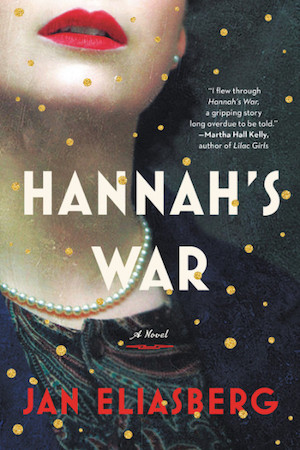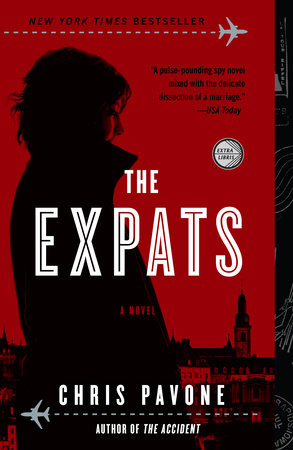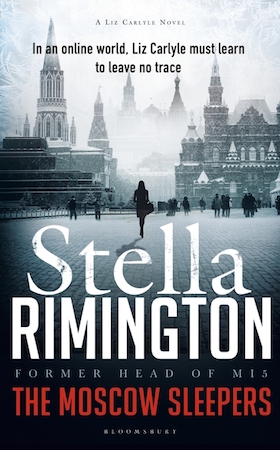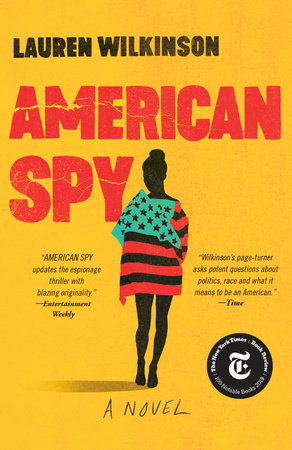If you enjoy reading Electric Literature, join our mailing list! We’ll send you the best of EL each week, and you’ll be the first to know about upcoming submissions periods and virtual events.
For the first time in the agency’s 74-year history, women dominate the upper ranks of the CIA. Since 2018, Gina Haspel has been the Director of Central Intelligence, and three of her top five directorates (support, analysis, and science & technology) are also headed by women.
Women played key roles in espionage operations during World War II, but peace and the Cold War relegated women to largely secretarial or administrative jobs. Cold War fiction tended to mirror the gender roles that were available to women in the real business of spies—books were filled with dedicated secretaries and pretty girls with whom flirty romances might yield intelligence.
Stella Rimington, the former head of MI5, and the first woman to hold that position (from 1992-1996), reflected on the role of women in spy fiction in her introduction to the reissue of Graham and Hugh Greene’s collection of spy fiction, The Spy’s Bedside Book. “The true spy story resembles real life as we all actually know it,” she wrote about the stories in the book, all of which were written before 1957. Her only complaint about the old stories in the book is that, except for a nod to Mata Hari, women are of little consequence.
Fiction’s espionage genre has long been a boy’s club. Wikipedia’s list of top living spy authors still only contains two women among the seventy names: Stella Rimington and Gayle Lynds. But as women rise in the rank of the CIA, spy fiction too is changing. The realistic spy novel has always tried to hold up a dark mirror to the wider world, so it is only fitting that as the world changes, that mirror reflects more women as central characters in spy novels.
Gayle Lynds’s Masquerade, published in 1996, became the first spy novel written by a woman to become a bestseller, and it helped open the genre for other women. Kate Atkinson, a literary author, entered the spy genre with Transcription, and recently a new group of talented young writers, including Lauren Wilkinson (American Spy) and Rosalie Knecht (Who is Vera Kelly?), have written well-received works.
There’s also Natasha Walter, a British feminist author and human rights advocate, who published a debut spy novel, A Quiet Life in 2016. At the time, she made a plea in The Guardian for more women spies in fiction. She wrote:
“I have often felt alienated by spy fiction because it has often seemed so rigidly masculine….Reading or watching spy narratives can feel claustrophobic when it means entering a world in which it is so often men who see and women who are seen – and seen as sexualized bodies above all.”
My new novel, The Mercenary, is part of this movement in spy fiction, featuring a young KGB officer who defects when she becomes disenchanted with corruption in 1980s Soviet Union. Here are ten spy novels (seven by women, three by men) where women are strong central characters.
Restless by William Boyd
Eva, a young Russian woman, is recruited after her brother’s death to work for the British secret service in London during WWII. She falls for her mentor, Lucas Romer, who works as a double agent, and his betrayal leads to Eva’s attempted murder. The tale is interlinked with the story of Eva’s daughter in the 1970s and how she comes to terms with the discovery of her mother’s secret life as a spy.
Hannah’s War by Jan Eliasberg
Dr. Hannah Weiss, a Jewish nuclear physicist who escaped Nazi Germany in 1938, works with American scientists on the atom bomb in 1945 Los Alamos, where she fends off chauvinistic flirtations from male colleagues. Hannah’s colleagues circulate a petition about her background, causing military intelligence to open an investigation into possible subversives on the team. The lead investigator wants to know whether Hannah is spying for the Nazis. Keenly developed characters add substance to the intrigue in this debut.
The Lost Girls of Paris by Pam Jenoff
A story of friendship and courage centered around a ring of female secret agents during World War II. The action opens in Manhattan in 1946 when Grace, a young American war widow, discovers an abandoned suitcase in Grand Central Station. Upon opening it, she finds an envelope of photographs of a dozen young women. Grace sets out to uncover who they are, and what happened to them, soon learning that the photographs are of young British women recruited and sent behind enemy lines in the final months of WWII to serve as clandestine messengers and radio operators supporting the efforts of a British spy network.
Who is Vera Kelly? by Rosalie Knecht
Knecht, a Center for Fiction emerging writer fellow, introduces readers to radio host Vera Kelly. Kelly is recruited by the CIA to work undercover in Argentina, where she becomes close with a group of student activists. Knecht has sly, intelligent fun with the idea that the mindset necessary to live as a closeted queer woman transfers seamlessly to high-stakes espionage work; a spy and a not-yet-out lesbian are both undercover—both accustomed to subverting identity with coded language and comfortable with covert action.
Sweet Tooth by Ian McEwan
Serena Frome, daughter of an Anglican bishop, is admitted to the University of Cambridge. While at Cambridge she becomes romantically involved with her professor, Tony Canning, who before abruptly ending the affair, secures a low-level position for Serena with MI5, British domestic intelligence. The job gives Serena a chance to take part in a new covert program codenamed “Sweet Tooth,” in which the agency counters Communist propaganda during the Cold War by offering financial assistance to young writers, academics, and journalists with an anti-Communist bent. The story explores the relationship between artistic integrity and government propaganda.
The Expats by Chris Pavone
Kate Moore and her husband, Dexter, move to Luxemburg where unknown to each other, they work as spies for different parts of the US government—and their lives as spies and spouses are braided together in a suspenseful tale. Before moving to Luxemburg, Kate was busy in Washington where Dexter thought she did something for the State Department. As far as Kate knew, her husband did something involving computer technology. The novel hinges on the idea that neither spouse knew what the other was up to. It ends with a string of head-spinning revelations, as layer after layer of deceit is peeled away.
The Alice Network by Kate Quinn
In 1947, pregnant Charlie St. Clair, an American college girl banished from her family, arrives in London to find out what happened to her beloved cousin Rose, who disappeared in Nazi-occupied France during the war. She meets a former spy who, torn by betrayal, agrees to help her on her mission. These two women—a spy recruited to an underground network and an unconventional American socialite searching for her cousin—are brought together in a story of courage and redemption.
The Moscow Sleepers by Stella Rimington
A Russian immigrant lies dying in a hospice in upstate Vermont. When a stranger visits, claiming to be a childhood friend, the FBI is alerted and news quickly travels to MI5 in London. Liz Carlyle and her colleague Peggy Kinsolving unravel the events that landed the man in the hospital, and Liz confronts a network of Russians and their plot to undermine the German government.
Liar’s Candle by August Thomas
Penny Kessler, a likable and reluctant American embassy employee wrongly accused of terrorist sympathies, goes on a non-stop adventure across Turkey in a quest to clear her name. The tension and relentless action ratchet higher from the very first chapter to the climatic ending as one terrifying escape follows the next and everywhere friends and foes change places. Thomas has eerily evoked not only the intrigue and brutality of terrorism in Turkey, but the country itself.
American Spy by Lauren Wilkinson
Wilkinson’s elegantly paced debut novel follows Marie Mitchell, a former FBI agent, who has been recruited by the CIA to go undercover and seduce a radical leader of Burkina Faso, who is visiting NYC. The well-worn trope of red-blooded American white men trying to save the world from the Soviet Union’s evil empire, long a spy novel cliché, is turned on its head; Wilkinson provides a unique spin on the Cold War spy thriller. American Spy explores the moral ambiguity of American adventurism in the 1980s.

